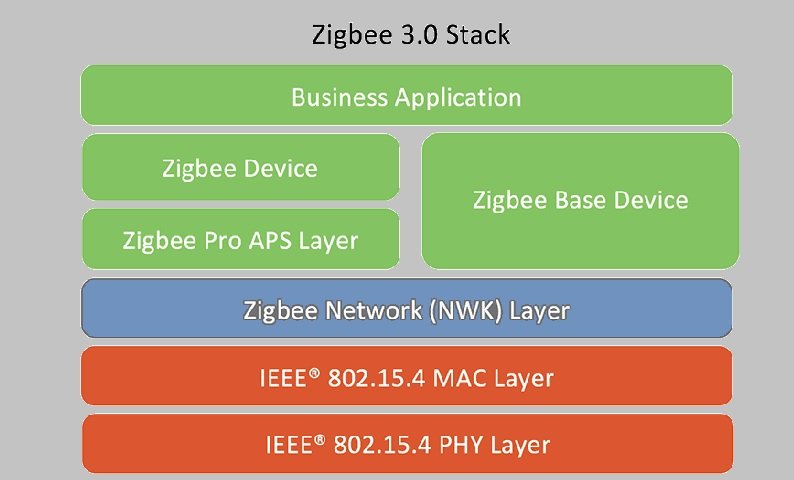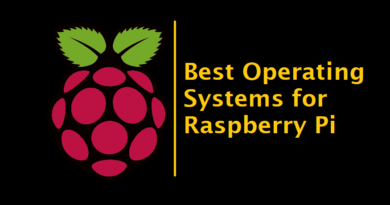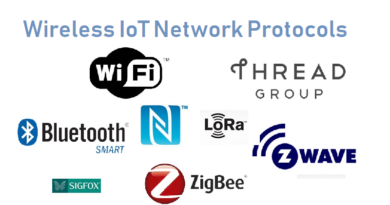Zigbee Introduction | Zigbee vs WiFi | What is Zigbee
Zigbee communication is specially built for control and sensor networks on IEEE 802.15.4 standard for wireless personal area networks (WPANs), and it is the product from Zigbee alliance. Zigbee is low-cost and low-powered mesh network widely deployed for controlling and monitoring applications where it covers 10-100 meters within the range. This communication system is less expensive and simpler than the other proprietary short-range wireless sensor networks as Bluetooth and Wi-Fi.
The Zigbee standard operates on the IEEE 802.15.4 physical radio specification and operates in unlicensed bands including 2.4 GHz, 900 MHz and 868 MHz. The 802.15.4 specification upon which the Zigbee stack operates gained ratification by the Institute of Electrical and Electronics Engineers (IEEE) in 2003. The specification is a packet-based radio protocol intended for low-cost, battery-operated devices.
Zigbee protocol features include:
- Support for multiple network topologies such as point-to-point,
point-to-multipoint and mesh networks - Low duty cycle – provides long battery life
- Low latency
- Direct Sequence Spread Spectrum (DSSS)
- Up to 65,000 nodes per network
- 128-bit AES encryption for secure data connections
- Collision avoidance, retries and acknowledgements

Zigbee’s Over-The-Air (OTA) upgrade feature for software updates during device operation ensures that applications on devices already deployed in the field can be seamlessly migrated to Zigbee 3.0. OTA upgrade is an optional functionality that manufacturers are encouraged to support in their Zigbee products.
Zigbee supports several network topologies; however, the most commonly used configurations are star, mesh and cluster tree topologies. Zigbee protocol is the ability to support mesh networking. In a mesh network, nodes are interconnected with other nodes so that multiple pathways connect each node. Connections between nodes are dynamically updated and optimized through sophisticated, built-in mesh routing table.
In a star topology, the network consists of one coordinator which is responsible for initiating and managing the devices over the network. All other devices are called end devices that directly communicate with coordinator. This is used in industries where all the end point devices are needed to communicate with the central controller, and this topology is simple and easy to deploy.
In a cluster-tree network, each cluster consists of a coordinator with leaf nodes, and these coordinators are connected to parent coordinator which initiates the entire network.
Applications of Zigbee Technology
Industrial Automation: In manufacturing and production industries, a communication link continually monitors various parameters and critical equipments. Hence Zigbee considerably reduce this communication cost as well as optimizes the control process for greater reliability.
Home Automation: Zigbee is perfectly suited for controlling home appliances remotely as a lighting system control, appliance control, heating and cooling system control, safety equipment operations and control, surveillance, and so on.
Smart Metering: Zigbee remote operations in smart metering include energy consumption response, pricing support, security over power theft, etc.
Smart Grid monitoring: Zigbee operations in this smart grid involve remote temperature monitoring, fault locating, reactive power management, and so on.
Zigbee supports a number of devices, including intelligent shopping carts, personal shopping assistants, electronic shelf labels and asset tracking tags.
Recommended: 6LoWPAN Vs ZigBee
Zigbee Alliance
The Zigbee Alliance works to simplify wireless product integration to help product manufacturers introduce energy-efficient wireless control into their products faster and more cost-effectively. Alliance members create standards that offer reliable, secure, low-power and easy-to-use wireless communication, using an open standards development process to guide their work. The alliance is organized by committees, work groups, study groups, task forces and special interest groups.
When speaking specifically about power consumption, ZigBee-based networks generally consume 25% of the power of WiFi networks. ZigBee’s battery life is a major plus over WiFi, and needs to be strongly considered if your endpoints will run on batteries.
802.11ah
A new WiFi standard, 802.11ah, in the unlicensed 900MHz band for home and building automation is expected to hit the market later this year. It will be competing with other already-established protocols in this band, namely ZigBee. WiFi AH aims to support a range of options from throughput of 150kbits/s with a 1MHz band to as much as 40mbits/s over an 8MHz band. It’s also expected to cover distances 50% longer than those of 802.11n products. You can learn more here and here.
I hope you like this post. Do you have any questions? Leave a comment down below!
Thanks for reading. If you like this post probably you might like my next ones, so please support me by subscribing my blog.
Explore Some more Raspberry Pi Tutorials :
- Raspberry Pi – Introduction | Overview | Setup and Management | Tutorials
- How to Install Mosquitto Broker on Raspberry Pi
- Setting up SPI on Raspberry Pi
- Getting Started with The Sense HAT – Raspberry Pi
- Raspberry Pi GPIO Basics
- Controlling LED with Raspberry Pi PART-2
- How To Setup Static IP Address on Raspberry Pi
- Controlling LED with Raspberry Pi
- Interfacing a light Sensor (LDR) with Raspberry Pi
- Remote control your Raspberry Pi from your PC with VNC!
- ROCK Pi 4 : Overview | Installation
- Best OS for Raspberry Pi
- How to setup Bluetooth on a Raspberry Pi 3
- Simple Raspberry Pi Home Security System
- Raspbian – OS For Raspberry Pi
- Setting up a Raspberry Pi headless





Pingback: Zigbee Introduction | Zigbee vs WiFi | What is Zigbee — IoTbyHVM – Bits & Bytes of IoT – hashstacks
Pingback: Microcontroller and SOC | Choose Hardware Platform for IoT Device